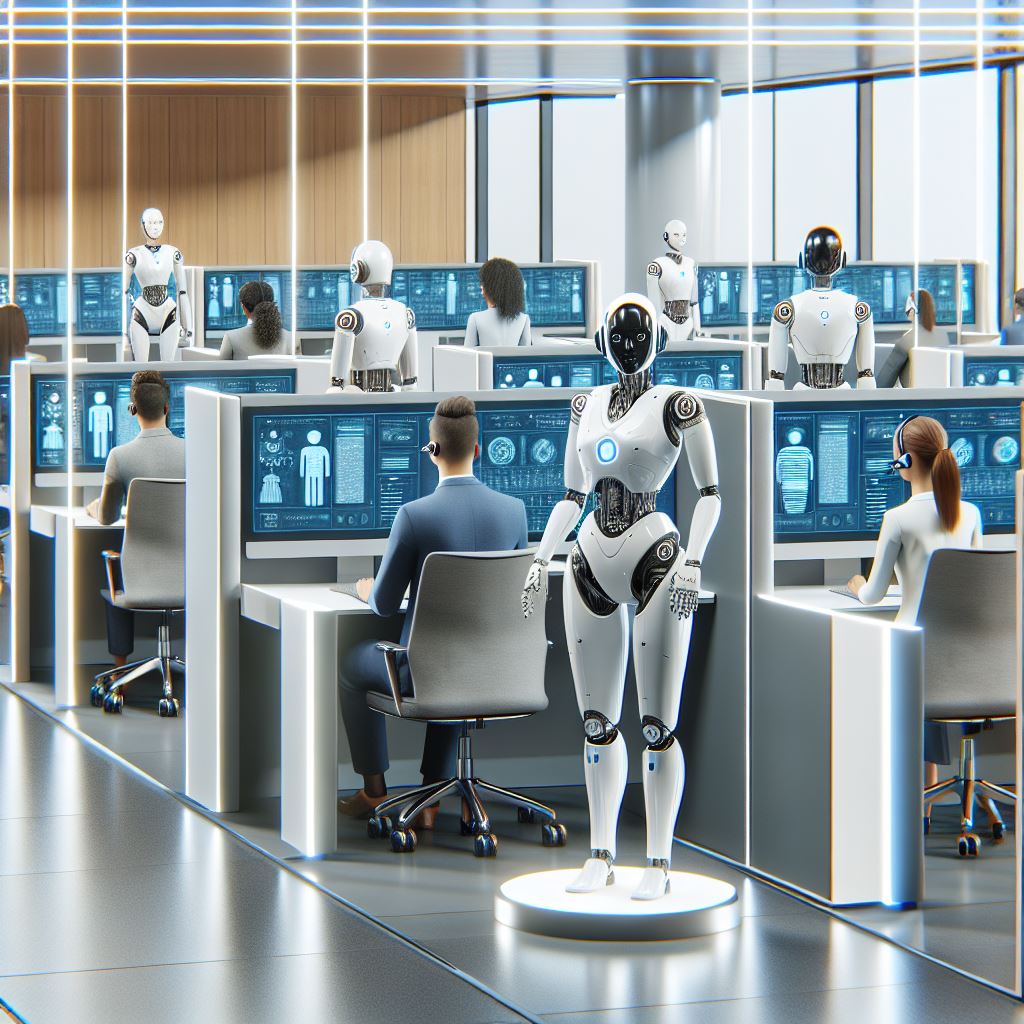Dr. Eliza Chen stared at her computer screen in disbelief. After three years of painstaking research into potential treatments for a rare neurodegenerative disease, her team had hit a wall. Traditional approaches had yielded nothing promising, and funding was running low. In desperation, they turned to an AI system designed to analyze molecular structures and predict drug interactions.
Within weeks, the AI had identified a compound that no one on the team had considered—a molecule originally developed for heart disease that, according to the AI's analysis, might bind to a key protein involved in the neurodegenerative process. Initial lab tests confirmed the AI's prediction, opening an entirely new avenue for treatment that human researchers had overlooked.
"It wasn't that the AI was smarter than us," Dr. Chen later explained. "It's that it could process and find patterns in volumes of data no human team could possibly analyze. It saw connections we simply couldn't see."
This scenario is playing out across scientific disciplines worldwide as artificial intelligence transforms how research is conducted, accelerating discoveries and opening new frontiers of knowledge.
The New Scientific Method
For centuries, the scientific method has followed a relatively consistent pattern: observation, hypothesis formation, experimentation, analysis, and conclusion. While this approach has yielded remarkable discoveries, it has inherent limitations—particularly in the face of today's data-rich research environment.
"The traditional scientific method assumes humans can effectively process all relevant information to form hypotheses," explains Dr. James Rodriguez, director of computational sciences at the Global Research Institute. "But in many fields, the volume of potentially relevant data has grown beyond human comprehension. There are over 50 million scholarly articles in existence, with thousands more published daily. No researcher can possibly stay current with all potentially relevant information."
This is where AI is fundamentally changing the research landscape. Machine learning systems can analyze vast datasets—from scientific literature to experimental results to real-world observations—identifying patterns and connections that human researchers might miss.
At Stanford University, an AI system analyzed thousands of materials science papers and successfully predicted novel heat-conducting materials that had never been synthesized, years before human researchers would have discovered them through conventional methods.
"We're moving toward a model where AI doesn't just assist with data analysis but actively participates in hypothesis generation," notes Dr. Rodriguez. "This doesn't replace human scientists but dramatically expands their capabilities."
From Astronomy to Zoology
The impact of AI on scientific research spans virtually every discipline, with particularly dramatic results in data-intensive fields.
In astronomy, machine learning algorithms are sifting through petabytes of telescope data to identify distant galaxies, unusual stellar phenomena, and potential exoplanets. The AI doesn't just process images faster than humans—it can detect subtle patterns invisible to the human eye.
"Our AI system identified a class of galaxy mergers that we had completely overlooked," says astronomer Dr. Sarah Williams. "The patterns were there in our data for years, but they were too subtle for us to notice until the algorithm flagged them."
In genomics, AI is accelerating the analysis of complex genetic interactions. When the COVID-19 pandemic began, AI systems analyzed the viral genome within days, identifying potential targets for vaccines and treatments far faster than would have been possible through traditional methods alone.
Climate scientists are using machine learning to improve the accuracy of climate models, analyzing complex atmospheric and oceanic interactions to better predict future changes. These enhanced models have significantly improved predictions of extreme weather events, potentially saving lives through earlier warnings.
Even fields traditionally less associated with computational methods are being transformed. In archaeology, AI systems analyze satellite imagery to identify potential excavation sites, recognizing subtle ground patterns that indicate buried structures. Several major discoveries in recent years were initially flagged by AI before being confirmed by human archaeologists.
Reimagining the Laboratory
Beyond data analysis, AI is changing how experiments themselves are conducted. Robotic systems guided by machine learning can perform thousands of experiments with precision and consistency impossible for human researchers.
At the Molecular Discovery Lab in Boston, an AI-driven robotic system conducts 100,000 chemical reactions per day, systematically exploring possible synthesis routes for new materials. The system doesn't just blindly try combinations—it learns from each experiment, continuously refining its approach based on results.
"Our AI doesn't follow a predetermined experimental path," explains Dr. Robert Chang, the lab's director. "It develops and tests its own hypotheses, learning from failures and successes to optimize its strategy. It's conducting experiments in ways no human would have designed."
This approach has dramatically accelerated the discovery of new catalysts, battery materials, and pharmaceutical compounds. What might have taken decades through traditional methods can now be accomplished in months.
Similar systems are revolutionizing biological research. AI-guided robots can conduct thousands of genetic experiments simultaneously, testing how different genetic modifications affect cell behavior. These systems have accelerated cancer research by rapidly identifying gene interactions that influence tumor growth.
The Literature Challenge
One of the most powerful applications of AI in scientific research addresses a fundamental challenge: the overwhelming volume of scientific literature. With millions of papers published across thousands of journals, no researcher can possibly read everything relevant to their field.
Natural language processing systems now analyze scientific papers at scale, extracting key findings, identifying connections between seemingly unrelated studies, and highlighting contradictions or confirmations across different research groups.
"The system found a connection between a paper in a neuroscience journal and one in a materials science publication that proved crucial for our research," says Dr. Elena Martinez, a biomedical engineer. "No human would likely have read both papers, but the AI identified that they were describing complementary mechanisms that, when combined, solved a problem we'd been struggling with for years."
These systems don't just passively analyze existing literature—they actively suggest new research directions based on gaps or opportunities they identify. Some can even generate hypotheses by connecting findings across disciplines in novel ways.
Ethical Considerations and Human Judgment
As AI takes on a more active role in scientific research, important questions arise about the relationship between human and machine intelligence in the scientific process.
"There's a risk of over-reliance on AI systems," cautions Dr. Michael Lee, an ethicist specializing in scientific research. "These systems can perpetuate existing biases in research data or methodology if not carefully designed and monitored. They're also limited by their training data—they can't have truly novel insights that transcend existing knowledge in the way human intuition sometimes can."
Most researchers emphasize that the most powerful approach combines AI capabilities with human judgment and creativity. The AI can process vast amounts of data and suggest possibilities, but human researchers provide crucial context, evaluate ethical implications, and make final decisions about research directions.
"The ideal relationship is collaborative," says Dr. Rodriguez. "The AI handles tasks where machines excel—processing huge datasets, identifying subtle patterns, generating and testing thousands of possibilities. Human researchers contribute what we do best—creative leaps, ethical judgment, and placing findings in broader scientific and societal contexts."
Democratizing Discovery
One of the most promising aspects of AI in scientific research is its potential to democratize access to advanced research capabilities. Sophisticated AI tools are increasingly available through cloud platforms, allowing smaller institutions and researchers in developing countries to conduct computational analyses that would have required supercomputers just a few years ago.
"We're seeing groundbreaking research emerging from institutions that traditionally lacked access to cutting-edge resources," notes Dr. Williams. "A team in Kenya recently used cloud-based AI tools to analyze local disease patterns and develop an intervention that has saved thousands of lives. That kind of work would have been impossible for them without these accessible AI platforms."
This democratization extends to citizen science as well. Projects like Galaxy Zoo, where volunteers help classify galaxies, now incorporate AI systems that learn from human classifications and can then process millions of additional images. This human-AI collaboration has classified more galaxies than would have been possible through either approach alone.
The Future of Scientific Discovery
Looking ahead, the integration of AI into scientific research promises to accelerate discovery across all scientific domains. Emerging quantum computing technologies will further enhance AI capabilities, enabling the simulation of complex molecular interactions at unprecedented scales. Meanwhile, advances in explainable AI are making these systems more transparent, helping researchers better understand the reasoning behind AI-generated hypotheses.
Perhaps most exciting is the potential for AI to help address humanity's most pressing challenges—from climate change to disease to food security. By accelerating the pace of scientific discovery and making advanced research tools more widely accessible, AI could democratize innovation in ways previously unimaginable.
"We're entering an era where the limiting factor in scientific discovery isn't computational power or even human intelligence," reflects Dr. Rodriguez. "It's our ability to effectively combine human and machine capabilities—to create collaborative systems that leverage the unique strengths of both."
Key Takeaways
1. Implement AI as a Research Partner, Not Just a Tool
The most successful applications of AI in research treat it as an active collaborator rather than a passive tool. Consider how AI might contribute to hypothesis generation and experimental design, not just data analysis. Create workflows where AI and human researchers can effectively complement each other's strengths.
2. Address the Cross-Disciplinary Opportunity
AI excels at finding connections across disparate fields that human researchers might miss. Develop systems that analyze literature and data across traditional disciplinary boundaries, and create research teams that include both domain experts and AI specialists who can interpret cross-disciplinary insights.
3. Consider Ethical Implications Early
As AI takes a more active role in research, ethical considerations become increasingly important. Establish clear protocols for validating AI-generated hypotheses, maintain transparency about AI's role in published research, and regularly audit AI systems for potential biases in their analysis or recommendations.
4. Democratize Access to AI Research Tools
The democratizing potential of AI in research will only be realized if these tools are widely accessible. Consider how your organization can share AI research capabilities with smaller institutions or researchers in developing regions. Open-source approaches and cloud-based platforms can significantly expand who can participate in cutting-edge research.
5. Develop AI Literacy Among Researchers
As AI becomes integral to the research process, all scientists need a basic understanding of its capabilities and limitations. Invest in training programs that help domain experts understand AI concepts without requiring them to become technical specialists. This enables more effective human-AI collaboration across research teams.
The AI revolution in scientific research isn't just changing how we conduct experiments or analyze data—it's fundamentally transforming our approach to discovery itself. By embracing these changes thoughtfully, the scientific community has an unprecedented opportunity to accelerate innovation and address challenges that once seemed insurmountable.




